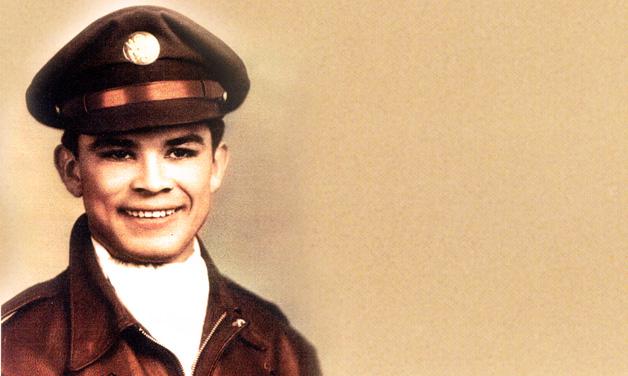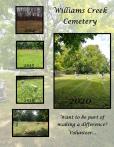Owen Coffman Legion Post 519 (Palm Springs, Calif.) recently dedicated its main hall room to one of World War II’s lost heroes, Roaul Prieto. While a deceivingly simple gesture, it is an honor that has been a long time coming, much in thanks to Roaul’s nephew, Legionnaire Eugene R. Prieto.
Eugene was a young boy, 6 or 7, when his grandparents received the letter from the Army Air Corps that changed his whole life: it said simply that Roaul had been killed.
“I read it as a young man, and I remember they didn’t have information as to how he had died.”
In fact, upon Roaul's death, his body hadn't been found. It wasn’t until 1949 that Roaul’s remains were found by the Russians, Eugene said, the name misspelled on his dogtag, which rode in the truck passenger seat of the German transporting bodies.
Roaul had served as a flight engineer and top turret gunner in the 303rd Bomb Group. “He sat in the little chair behind the co-pilot and pilot and had his own little instruments to read,” Eugene said. He could imagine Roaul kneeling between the two to help them read the gauges.
Eugene said Roaul had been bright, going places. In fact, he qualified to be a flight engineer when he was drafted in spite of only having the education of a high school sophomore. Eugene’s grandfather had pulled Roaul out of school to work as a gardener to help support the family during the Depression, which put him behind in school.
He was also a great, loving uncle, Eugene said. He passed on his patriotism and passion for education - Eugene served in the Navy, the Air Force Ready Reserve and the National Guard as well as working as a teacher for 30 years. When Roaul left for combat, he took a photo of his four nieces and nephews, including Eugene, with their parents. The Army Air Force sent it back after he died.
It’s no surprise that the nephew who loved his uncle so much would spend much of his life tracking down the final minutes of his life and attempting to return his remains to California.
“Later in years as I grew up, grew older - grew old - I sent for his medical records, his mission report and they sent me all that information,” Eugene said.
The mission report bears a stark account of Roaul’s tragic first mission on the B-17 Green Hill Belle: it exploded in a collision with another plane near Loessnitz, Germany. No parachutes were observed leaving either plane. It was April 6, 1945 - only weeks before the war in Europe would end.
Eugene made a pilgrimage of sorts to Loessnitz. He videotaped the whole area, talked to the town’s archivist and mayor. “A lot of people came out who had witnessed the wreckage and seen the pieces as they fell,” he said.
Roaul should be buried at home, he thought. (He’s buried in an American cemetery in Ardennes, Belgium.) He worked with Congress, with a bill that died in committee. He wrote all the way up to the White House. But because of legal issues, the obstacles appeared insurmountable - in spite of the fact that the Prieto family was willing to pay for the disinterment, flight, DNA check or, as Eugene put it, “the whole thing.”
So he hung a big picture of his uncle in the Legion hall. He added a copy of the mission report and kept his story alive by sharing it.
His fellow Legion members took notice. Adjutant Albert Martinez got involved; member Lee Gussler suggested rededicating the main hall room. They added a plaque to the display Eugene created.
The ceremony was a grand affair, Eugene said, complete with family, Legionnaires and even long-lost friends of Roaul’s. One of his high school teachers, who is 96 years old, even made an appearance.
“He deserved that honor. He deserved it,” Eugene said. “And I was lucky enough to live long enough to do it.”




